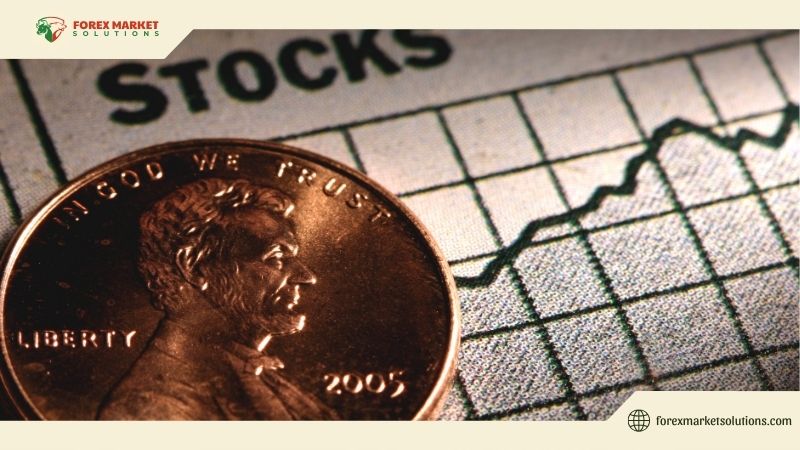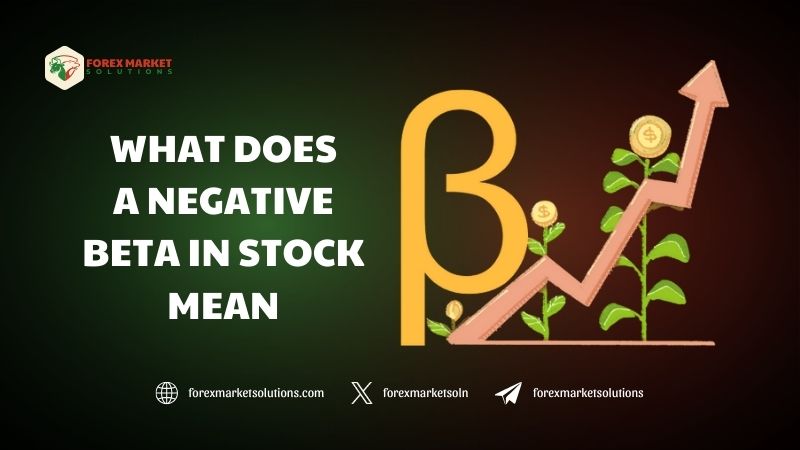In the world of stock investing, metrics like beta offer a window into a stock’s behavior, helping traders and investors gauge risk and reward. One intriguing question that often arises is what does a negative beta in stock mean? Simply put, a negative beta indicates that a stock moves in the opposite direction of the broader market—when the market rises, the stock falls, and vice versa. This unusual trait can puzzle newcomers and seasoned investors alike, but in 2025, with markets shaped by volatility, economic shifts, and sector-specific trends, understanding this concept is more relevant than ever. This comprehensive guide explores the meaning of a negative beta, its causes, and its implications, equipping you with the knowledge to navigate stocks with this rare characteristic.

The significance of what does a negative beta in stock mean extends beyond academic curiosity—it’s a practical tool for portfolio management and trading strategies. In a year marked by uncertainty, from interest rate hikes to geopolitical tensions, stocks with negative beta can serve as hedges or signal unique opportunities. Whether you’re diversifying your investments, trading equities, or exploring correlations in financial markets, grasping this metric offers a strategic edge. Let’s dive into the details of negative beta, unpacking its mechanics and applications in 2025’s dynamic landscape.
Understanding Beta and Its Role in Stocks
To fully comprehend what does a negative beta in stock mean, it’s essential to start with beta itself. Beta measures a stock’s volatility relative to a benchmark, typically the S&P 500. A beta of 1 means the stock moves in lockstep with the market—up 1% when the market rises 1%, down 1% when it falls. A beta above 1 signals higher volatility—say, a tech stock jumping 1.5% for a 1% market gain—while a beta below 1 indicates less movement, like a utility stock inching up 0.7%.
Negative beta flips this script. A stock with a beta of -1, for instance, drops 1% when the market gains 1%, or rises 1% during a 1% market decline. This inverse relationship defies the norm, where most stocks trend with the market. Calculated using historical price data and regression analysis, beta reflects past correlation, not a guaranteed future, but it’s a key lens for assessing risk. In 2025, with markets reacting to inflation, tech disruptions, and energy transitions, understanding what does a negative beta in stock mean sheds light on outliers that buck the trend.
This metric stems from a stock’s unique drivers. While the market reflects broad economic health, a negative-beta stock dances to its own tune, influenced by factors that counter prevailing sentiment. Exploring these drivers reveals why such stocks exist and how they behave.

Causes of a Negative Beta
So, what does a negative beta in stock mean in terms of its origins? Several factors can push a stock’s beta below zero, often tied to its industry, market conditions, or specific events. One common driver is a strong inverse correlation with economic cycles. Gold mining stocks, for example, often exhibit negative beta because gold prices rise during downturns—when stocks tank—as investors seek safe havens. If the S&P 500 drops 2% amid recession fears, a gold stock like Newmont might climb 3%, yielding a beta of -1.5.
Countercyclical industries also contribute. Companies producing essential goods—think discount retailers like Dollar General—may thrive when discretionary spending falls, moving opposite the market. In 2025, with potential rate hikes squeezing consumer budgets, such stocks could see demand spike as the broader market falters, reinforcing their negative beta. This dynamic answers what does a negative beta in stock mean by highlighting resilience against economic headwinds.
External events can amplify this effect. A biotech firm shorted heavily during a market rally—say, due to regulatory setbacks—might plummet while the S&P 500 soars, pushing its beta negative. Similarly, currency fluctuations or commodity ties (e.g., inverse oil price moves) can decouple a stock from market trends. These quirks make negative-beta stocks rare but fascinating in 2025’s volatile climate.
What Does a Negative Beta in Stock Mean for Investors?
For investors and traders, what does a negative beta in stock mean in practical terms? It’s a double-edged sword, offering both opportunities and challenges. The primary advantage is diversification. In a portfolio heavy with positive-beta stocks—tech giants or cyclical firms—a negative-beta stock acts as a hedge. If the market crashes 5%, your gold miner with a -1.2 beta might jump 6%, offsetting losses. In 2025, with recession risks looming, this balance can stabilize returns, smoothing out volatility.
This hedging power shines during downturns. Picture a portfolio with $10,000 in an S&P 500 ETF (beta 1) and $5,000 in a gold stock (beta -1). A 10% market drop cuts the ETF to $9,000 but lifts the gold stock to $5,500—a net loss of just $500 versus $1,000 without the hedge. This math underscores what does a negative beta in stock mean for risk management, a vital tactic in uncertain times.
Yet, negative beta has downsides. In bull markets—say, a 2025 tech rally—these stocks lag or decline, dragging portfolio gains. A -0.8 beta stock might fall 4% while the market rises 5%, testing patience. Trading them requires timing—buying before downturns, selling during upswings—unlike buy-and-hold strategies for growth stocks. Their rarity also limits options, often confining you to niche sectors like precious metals or defensive plays.

Trading Negative-Beta Stocks in 2025
Trading negative-beta stocks demands a tailored approach, blending analysis with market awareness. On platforms like TradingView, plot a stock—say, Barrick Gold—against the S&P 500. If its beta hovers at -1.3 and the market nears a peak (e.g., RSI overbought at 70), a reversal looms. Buy at $20, setting a stop at $19 and a target at $23, betting on a market drop boosting gold. In 2025, with inflation data or Fed moves swaying indices, this countertrend play leverages what does a negative beta in stock mean for profit.
Confirmation matters. Pair the trade with gold price trends or a bearish S&P candle—like a shooting star—to validate the move. Shorting positive-beta stocks alongside—say, a tech ETF—doubles down on the hedge, though it raises risk. Scale in gradually—$1,000 chunks—to test waters, adjusting as correlations shift. This agility suits 2025’s choppy markets, where negative-beta stocks shine as contrarian bets.
Limitations and Misconceptions
Despite its appeal, what does a negative beta in stock mean isn’t foolproof. Beta’s backward-looking nature—based on past data—can mislead if conditions change. A gold stock’s beta might flip positive if mining costs soar, breaking its inverse link. Sector shifts—like green energy eclipsing gold in 2025—can also disrupt patterns. Relying solely on beta ignores fundamentals—earnings, debt—that drive price.
Misreading it as a guaranteed hedge is another trap. Negative beta doesn’t mean immunity—idiosyncratic risks (e.g., a mine strike) can tank a stock regardless of the market. In 2025’s tech-driven markets, blending beta with real-time analysis avoids these pitfalls, grounding your strategy.

Decoding Negative Beta
The question what does a negative beta in stock mean unveils a rare but potent metric—stocks that zig when the market zags. In 2025, as volatility tests portfolios, this inverse dance offers hedging power and trading potential, from gold miners to defensive plays. Understanding its causes and applications turns a quirky stat into a strategic tool, balancing risk with reward. Embrace what does a negative beta in stock mean, and you’ll navigate markets with a sharper edge.
For more stock insights and trading tips, follow Forex Market Solutions — your guide to mastering 2025’s financial frontier
